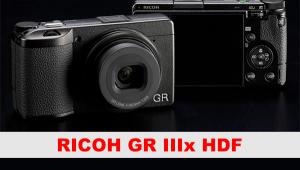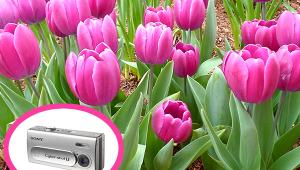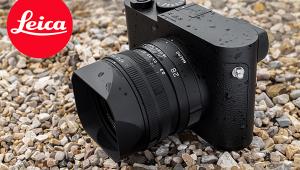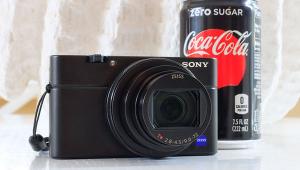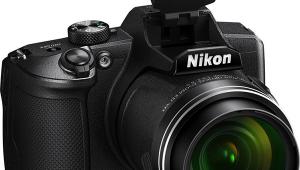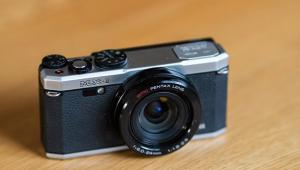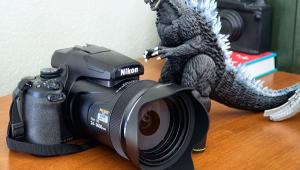Fujifilm X100T Compact Camera Review
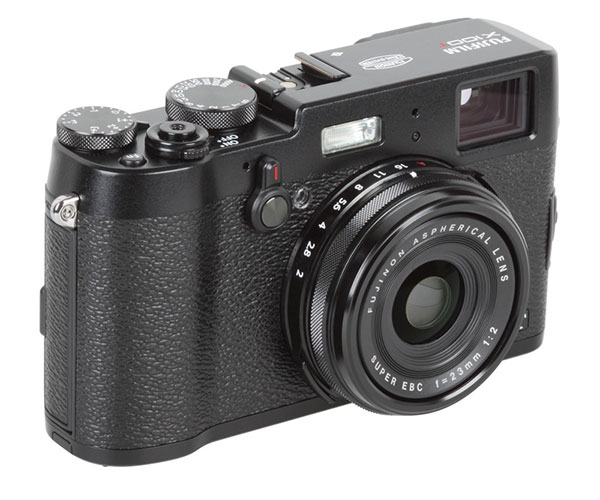
[Editor's Note: Lab test and comments are by Betternet, Shutterbug’s TIPA-affiliated testing lab. TIPA (www.tipa.com) is a worldwide association of photo and imaging magazine editors. Shutterbug is the sole US member of the association, and Editor at Large George Schaub serves as a member of the Technical Committee. Please click on the Image Tech tab on the home page for more camera review tests.]
The Fujifilm X100T ($1,299) is the newest camera of the X model series. It uses an APS-C sized sensor with 16MP and has a 23mm integrated (i.e. non-interchangeable) lens, equivalent to nearly 35mm in 35mm film format. The lens is fast at f/2.0 and offers very sharp, crisp images.
Camera Build & Layout
The Fuji X100T has a retro-style body that looks like a classic rangefinder system. This viewfinder is quite unusual, a “hybrid” that combines an optical viewfinder with electronic overlays and an additional electronic viewfinder. The electronic overlay shows image parameters and displays the scene with parallax compensation, very helpful when making close-up shots.




By pressing a lever on the front, the camera switches to its electronic viewfinder, which offers 2.36 million RGB dots and shows a very crisp and brilliant image. All told, the hybrid viewfinder system allows for very versatile handling of the camera. It offers focus peaking and a focus magnifier function, which makes manual focusing very comfortable. The LCD screen on the back is fixed, which to us is a shortcoming. It offers 1,040,000 RGB dots and shows a very clear and brilliant image as well.
To change aperture or shutter speed manually there’s a large lens ring with aperture marks and a dial on the top to set up shutter speed. The changes take place in 1 EV increments, although to make incremental changes between EVs the user can work with a setup dial on the back. This little wheel works with a dial motion and a Set/OK button to change image parameters or menu settings. In addition, the camera has an EV compensation dial on the top, which allows the user to change automatic exposure settings by +/- 3 EVs.
The X100T offers numerous individual settings in the menu. For example, the photographer can change the behavior of the focus ring (clockwise/counterclockwise rotation for macro to infinity setting) and define commands for seven of its function buttons, even though only the function button on the top is marked as a user-defined “Fn” button.
The camera has a Wi-Fi module, but an NFC system is missing. The Wi-Fi module allows for transfer of images to a PC/smartphone. The smartphone can also be used as a remote control. Fujifilm offers free software apps for Android and iOS systems. By using a smartphone and its GPS system, the X100T offers geotagging for images as well.

Comments on Image Quality:
Color: The color results of the Fujifilm X100T are very good. The saturation is a little high (112.3 percent) and the blue nuances are boosted and quite oversaturated. Skin tone reproduction is excellent, with only quite bright skin tones showing a bit higher magenta rate. The automatic white balance system causes a somewhat cooler look in darker gray nuances and a slight shift into the yellow and green direction in brighter nuances. Exposure settings of the portrait and the test box shot were made in automatic mode, ISO 200, and are nearly perfect.
Sharpness: Sharpness of the X100T images is excellent. The camera reproduced the ISO 12233 chart with 3194 of 3264 lines per picture height. The high quality lens shows nearly no chromatic aberration effects and the contrast lines in the test box image and the ISO 12233 chart are reproduced without colored halo lines. The high sharpness is reached without an exaggerated sharpness filtering. The over- and undershot effects are low. Both test images show detail rich, clear and crisp structures. The differentiation, even in “difficult” colors like in the red spool, is good.

Noise: The X100T showed an excellent performance in our noise tests. The luminance noise level is very low. Up to ISO 3200 it stays below 0.5 percent (!) and even at ISO 6400 setting it doesn’t cross the 1,0 line. The color noise level is very low. Only in images taken at ISO 3200 and 6400 did we notice noise artifacts.
The dynamic range results are excellent. The camera achieved a maximum of 11.9 f-stops and keeps a high dynamic range level in images taken with ISO 200 to ISO 3200 (more than 10 f-stops); only at ISO 6400 does the dynamic range fall off.
Video Format and Handling
The Fujifilm X100T offers video recording in full HD mode with 1920 x 1080 pixels. It offers high frame rates up to 60 frames per second, and even allows PAL compatible modes with 25 frames per second (most Fujifilm predecessors in the X series offered only NTSC compatible modes with up to 30 frames per second).
The movies are saved as Apple QuickTime MOV files with H.264 compression. The camera doesn't offer any other file or compression format.
Video recording starts by pressing the “Fn” button on the top. This is the default setting, but, as noted in the still image portion of this test, the user can change the function settings of seven different buttons on the X100T, so video recording function could be shifted to the “DRVE” button on the back, for example.
The electronic viewfinder and the LCD screen on the back allow comfortable handling and focusing. The camera offers focus peaking and magnifier function to set up focus very easily. It allows all exposure modes for video recording. In addition, it manual ISO speed settings, but only in “M” mode. Sound level can be controlled manually. To enhance sound quality Fujifilm offers an external microphone, which can be connected to the 2.5 mm jack on the right hand side of the camera and mounted on the accessory shoe of the camera.

Comments on Video Quality
As we’ve noted in past video tests with various Fujifilm X series cameras, sharpness in videos is disappointing. The new X100T reproduced the test chart with only 429 lines per picture height (nominal resolution of the video is 1080 lines per picture height). The camera created extremely high aliasing and Moiré effects, even though sharpness is very low. Our test video images, for example, show extreme “jaggies” on diagonal contrast lines.
The color reproduction, however, is very good. The camera created video images with natural looking colors. The saturation level is a bit increased, but most colors are reproduced quite well.
The dynamic range results are disappointing. While the camera showed very high results in photo mode, the results in video mode are extremely low (5-6 f-stops).

Pro
+ very sharp images due to large sensor and high quality lens
+ excellent hybrid viewfinder
+ professional handling
+ Wi-Fi for data transfer and remote control
Con
- fixed focal length (wide angle and teleconverter available as option)
- fixed LCD screen
- Log in or register to post comments
